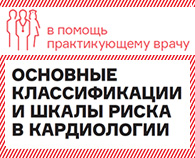Clopidogrel/atorvastatin protect in carotid stenting
San Francisco, CA - A 600 mg clopidogrel loading dose reduced periprocedural ischemic cerebral events and rates of transient ischemic attack (TIA) and stroke at 30 days in patients undergoing carotid stenting in the ARMYDA-9 CAROTID study [1].
The study, presented at the American College of Cardiology 2013 Scientific Sessions last Saturday, also found that a short-term reload with high-dose atorvastatin significantly decreased cerebral events even though patients were already taking chronic statin therapy.
Reporting the data, Dr Giuseppe Patti (Campus Bio-Medico University of Rome, Italy) stated: "Drug therapy recommended in the guidelines for carotid stenting procedures is mainly derived from interventional coronary studies, whereas the ARMYDA-9 CAROTID study supplies evidence directly obtained in the specific setting of carotid intervention and may contribute to guide pharmacological management of carotid stenting."
The ARMYDA-9 CAROTID study, which was also published online in the Journal of the American College of Cardiology on March 9, 2013, involved 156 clopidogrel-naive patients on chronic statin therapy undergoing carotid stenting.
They were randomized in a 2x2 factorial design to receive clopidogrel 600-mg vs 300-mg loading dose and atorvastatin reload with an 80-mg dose 12 hours before intervention and a further 40-mg dose two hours before vs no statin reload.
The primary end point—the 30-day incidence of TIA/stroke or new cerebral lesions—was significantly reduced in the 600-mg-clopidogrel loading dose group.
ARMYDA-9 CAROTID: Clopidogrel results
| Outcome | 600-mg clopidogrel load (%) | 300-mg clopidogrel load (%) | p |
| TIA/stroke or new cerebral lesions | 18.0 | 35.9 | 0.019 |
| Poststenting new cerebral lesions | 18.0 | 33.3 | 0.044 |
| Contralateral new cerebral lesions | 6.4 | 11.5 | 0.78 |
| TIA/stroke | — | 9.0 | 0.02 |
| Vascular/bleeding complications | 6.4 | 10.3 | 0.56 |
The primary end point was also reduced with the atorvastatin reload.
ARMYDA-9 CAROTID: Atorvastatin results
| Outcome | Atorvastatin reload (%) | No atorvastatin reload (%) | p |
| TIA/stroke or new cerebral lesions | 18.4 | 35.0 | 0.031 |
| Poststenting new cerebral lesions | 17.1 | 33.8 | 0.028 |
| Contralateral new cerebral lesions | 5.3 | 12.5 | 0.19 |
| TIA/stroke | 1.3 | 7.5 | 0.14 |
| Vascular/bleeding complications | 7.9 | 8.8 | 0.92 |
Primary end point according to clopidogrel/statin randomization
| End point | Clopidogrel 600 mg+atorvastatin reload (%) | Clopidogrel 600 mg, no atorvastatin reload (%) | Clopidogrel 300mg+atorvastatinreload (%) | Clopidogrel 300 mg, noatorvastatin reload (%) |
| 30-d incidence of TIA/stroke or new cerebral lesions | 18.9 | 17.1 | 18.0 | 53.9 |
Patti suggested that the faster and more intense platelet suppression at the time of intervention provided by high-dose clopidogrel load may prevent distal embolization, protect the microvascular bed, and counterbalance the postprocedural procoagulant status.
In addition, rapid, LDL-independent neuroprotective effects may be responsible for the atorvastatin benefit, by limiting periprocedural microembolization and procedural injury, he added.
Source: www.theheart.org






